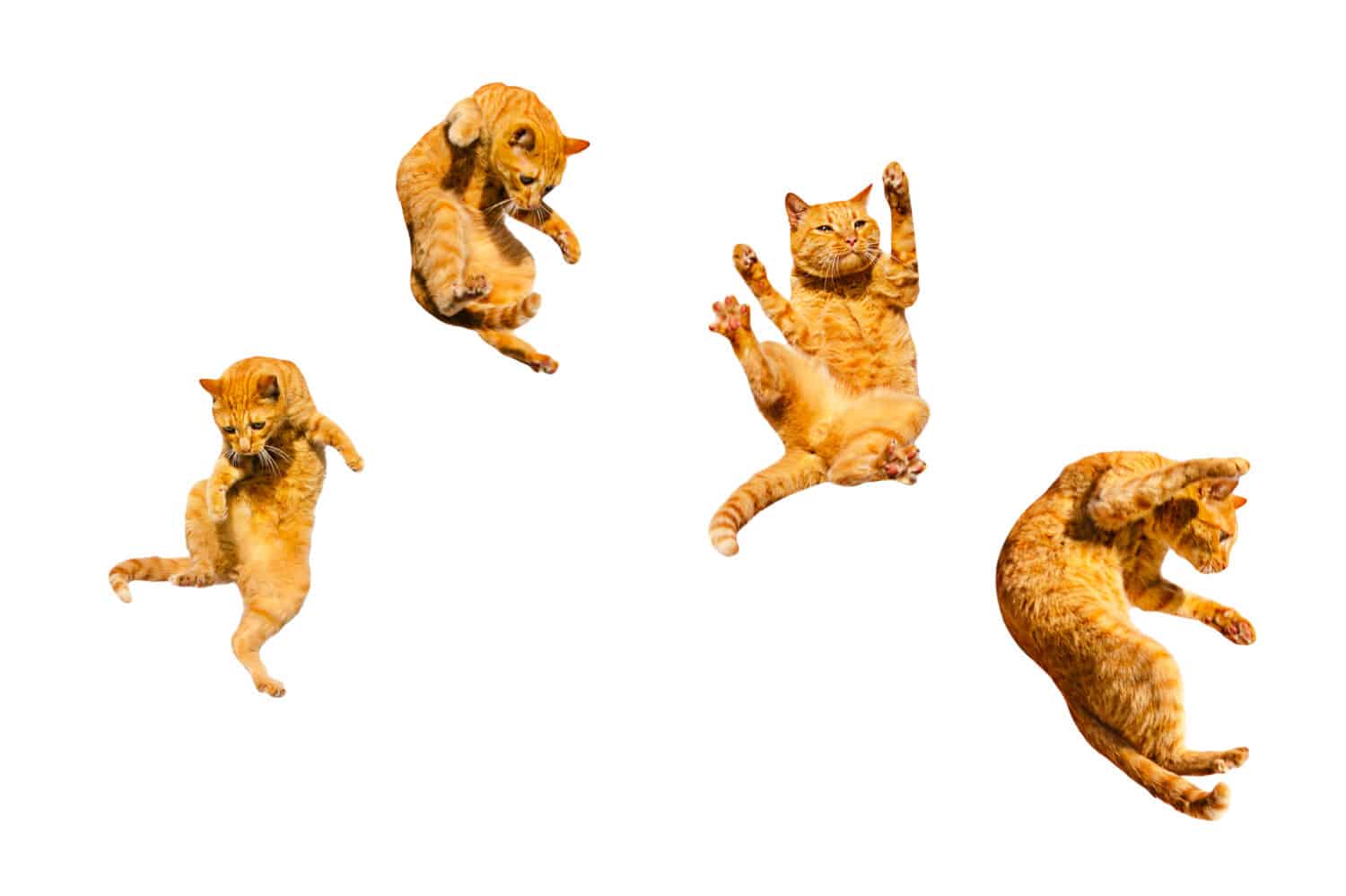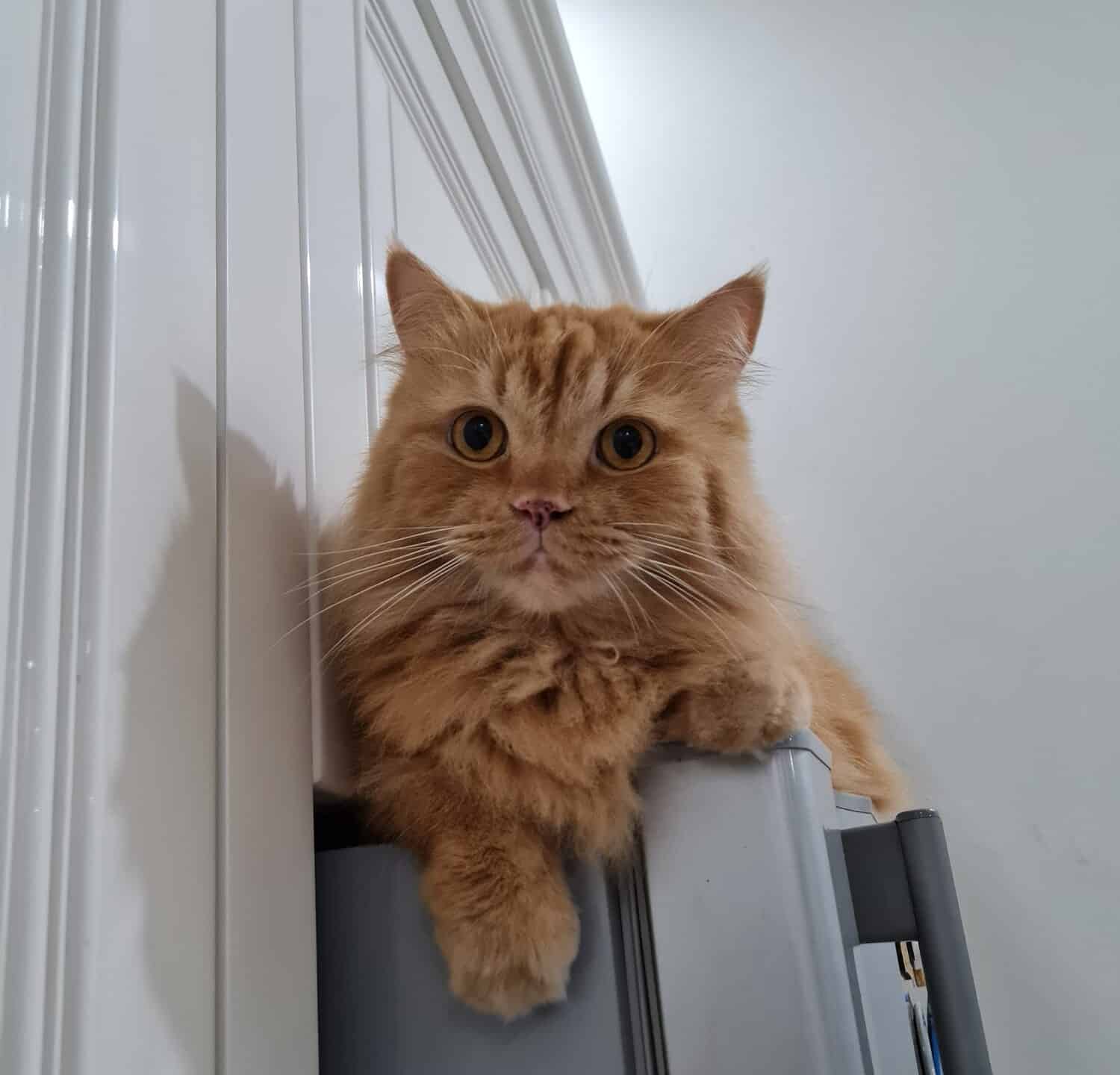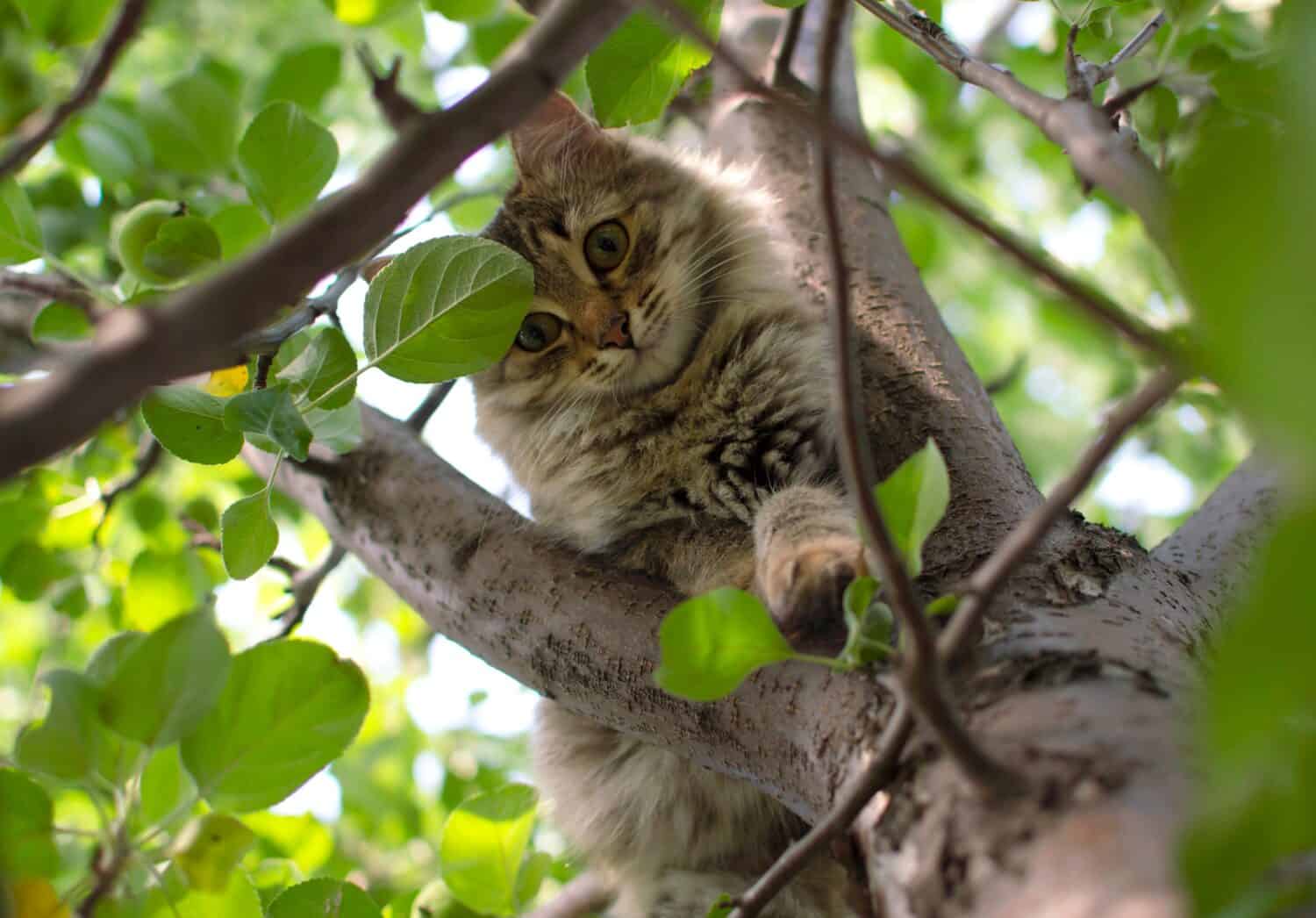While cats may have nine lives, their fondness for heights might not always end in them landing on their feet. Sometimes curiosity really does kill the cat. But, many cats reported to fall from second-floor windows, trees, and highrises manage to survive, which begs to ask, how far can cats fall without getting hurt? Higher falls usually give cats time to position themselves for landing, called velocity. Cats can usually fall from eight feet without sustaining injuries, but cats have fallen from higher positions and survived. But, this does not mean it’s a guarantee, and owners should never let their furry friends sit at open windows on higher floors—especially older cats or kittens, who are more susceptible to injury.
Do Cats Injure Themselves When They Fall?
Many owners are shaken when their cat falls from a tree, second-story building, or highrise, but then they walk away as if nothing happened. However, it is important to note that the cat could hide its pain, so they need to see a vet for a check-up. It’s hard to say what could cause a cate to hurt itself during a fall, but factors include:
- Senior cats or kittens are more prone to injury because they have weaker bones.
- Cats that are overweight stand more chance of hurting themselves.
- The area where they land will have a huge impact. Softer surfaces will reduce the risk of injury.
- Falling for higher positions results in fewer injuries.
Cats can survive falls from great heights because of the strength of their legs. While their legs don’t seem very strong, they are full of muscles. In addition, their paw pads play a role in landing as they are natural shock absorbers. Therefore, the impact spreads evenly over the entire body when they land on their feet.
Why Do Cats Always Land on Their Feet?
Firstly, cats don’t always land on their feet. But, generally, if they fall from a considerable height, they will position themselves to land on their paws. Cats perfect this technique as kittens. It’s called a righting reflex. For example, when a cat falls, the vestibular apparatus in its ears naturally enables the cat to balance itself. When falling, cats instinctively follow a process; the steps include:
- Realization of the fall
- Bending their torsos inward into a V-shape
- Rotating the body by tucking the front legs and extending the rear legs
- Completing a second rotation by folding the back legs and extending the front legs
- Making a 180-degree turn by rolling
The cat will do this several times to ensure they land on their feet. Unfortunately, this does not guarantee a safe landing, as it depends on the cat’s physical condition at the time of the fall.

If cats fall from a considerable height, they will position themselves to land on their paws.
Image: Vikafoto33, Shutterstock
©Vikafoto33/Shutterstock.com
Falling Off High Items in Homes
It’s hard to keep your cat off high furniture in your home. They are curious natural-born climbers and are often found on top of closets, refrigerators, and kitchen cabinets. But falling from high items in the house rarely causes injury. For example, the average height of a ceiling in an American home is around 8 feet, and cats can leap approximately 8 feet. Therefore, these furballs can comfortably jump from the ceiling to the floor or vice versa. However, not all cats are safe from falling in a home. Older cats generally have degraded cartilage in their legs, making it uncomfortable or painful to jump. As a result, if they fall, there is a good chance injuries can occur. So, if you have an older cat that still loves to climb, you can prevent them from getting hurt by placing soft landing spaces, like cushions, under their favorite spots.

The average height of a ceiling in an American home is around 8 feet, and cats can leap approximately 8 feet.
Image: Oscar Salim, Shutterstock
©Oscar Salim/Shutterstock.com
Falls from Trees
Unfortunately, cats falling from trees are more problematic than falling from furniture. The environment is different. Anything can happen like the cat being startled by a sudden noise. In a stressful situation, the cat’s instincts can be impaired. Furthermore, trees are not smooth, with horizontal surfaces, making falls more probable. While it’s easy for a cat to clamber up a tree chasing prey, it might not realize how high it’s climbing. But, once it comprehends where it is, it may get stuck and refuse to come down. Cats also enjoy falling asleep in trees and might lose their balance. Some cats don’t wake up in time to use their righting reflex, causing injury or death.

In a stressful situation, the cat’s instincts can be impaired.
Image: Inna_Kandybka, Shutterstock
©Inna_Kandybka/Shutterstock.com
Falls From a Second-Floor
As mentioned above, cats can leap up to 8 feet, roughly the same height as a ceiling in a single-story house. However, if they fall from a second-floor landing, it is around twice as high as they can comfortably leap. Therefore, there is a possibility a cat can get hurt if they fall from a second story. Healthy cats with an average weight should spread their bodies to distribute the impact of the landing equally. If they do this, they will be shaken, but recovery is likely. However, overweight or older cats are more susceptible to injury as their weaker bone structure may result in fractures or breaks. The most common injuries include pelvis, femur, and mandible breaks. Lastly, the outcome will depend on the cat’s reflexes. If they don’t have enough time to implement the righting reflex, injury is certain.
Reports from the Journal of Feline Medicine and Surgery state that cats are most likely to sustain injuries when they fall from a seven-story landing. It suggests the fall is not high enough to achieve terminal velocity but too high to jump to safety.
Falls from Highrise Buildings
There is a name for cats that fall from a great height and sustain injuries: highrise syndrome. However, surprisingly, cats are likelier to survive falling from great heights. Researchers surveyed 132 cats that fell from an average height of five stories. Only 37% needed emergency treatment, 90% experienced blunt force trauma, 30% required non-emergency assistance, and some didn’t require treatment—additionally, 90% of the injured cats that saw the vet survived. The reason for this miraculous result is terminal velocity.
What is Terminal Velocity?
Feline terminal velocity is the maximum speed a cat reaches when falling from great heights with their limbs extended. Therefore, when a cat falls from a highrise, or tall building, it will achieve terminal velocity to slow down its fall. This increases the likelihood of survival, and there is less chance of injury. Unlike humans, cats are lighter and fall at a speed of 60 mph. This gives them more time to position themselves for impact. Once the cat achieves terminal velocity, it will relax its body and extend its limbs. It is very similar to the effect of a parachute, which slows the fall. Additionally, the cat’s natural instincts will use its righting reflex. However, no matter how prepared the cat is, the shock from a fall from great heights is very dangerous, and injuries can be fatal.
What is the Highest Fall a Cat has Survived?
The highest fall a cat has survived occurred in New York when a cat fell 32 stories from a highrise apartment building. Astonishingly, the cat only had to endure two days of treatment before it was sent home. Vets believed it spread its legs to reach terminal velocity and landed on its belly. As a result, she prevented her legs from shattering but suffered from a collapsed lung. However, she made a full recovery!
Thank you for reading! Have some feedback for us? Contact the AZ Animals editorial team.








